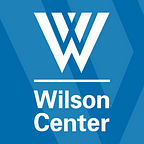Diversity by Design
Arlington and Markham aren’t just ‘celebrating’ diversity, they’re using policy to plan it.
Be honest: when you imagine thriving and successful cities and towns, do you think first of diversity?
Challenging stereotypes and conventional wisdom, two North American communities aren’t simply “managing” diversity, they are benefiting from it in significant ways.
Arlington County, Virginia
consistently ranks among the most highly educated of all U.S. counties, with some of the highest income levels and lowest crime rates and is one of the most ethnically diverse in the country.
With more than 200,000 residents, Arlington is home to the entire world as 28 percent of its population is foreign-born, including 15 percent who are Hispanic or Latino and nearly 10 percent who are Asian. Interestingly, no single ethnic group dominates in Arlington.
In Arlington, a policy of diversity
In January 2008, Arlington County Chairman Walter Tejada announced an “Agenda for Progress” aimed at improving overall quality-of-life in the county, with a focus on three major priorities: public health, affordable housing, and making Arlington more inclusive.
Towards that end, the County Board established a Diversity Dialogue Task Force entrusted with holding town hall-style forums to “identify diversity-related issues that concern our community, … [including] those that may not have yet become problems,” and recommending policy changes to make Arlington more inclusive.
In September and October 2008, the Task Force held three “Diversity Dialogues.” All told, roughly 500 residents turned out to take part.
Divided up into groups of four-to-six people (including bilingual “table hosts” to facilitate the participation of non-English speakers), the participants were asked open-ended questions aimed at prompting conversation, illuminating individuals’ experiences, and informing prescriptive public policy:
“Why are people afraid of diversity?” “What about our history needs to be acknowledged as we move forward to a more inclusive community?”
As the participants shared their thoughts, volunteers recorded their candid answers on a giant paper canvas — “History is a context for understanding.” “Acknowledgement is not enough.” “Why are you assuming people is afraid of diversity?” “We have to get personal!” — and privately asked participants to fill our surveys after the exercise:
“I am more of an Arlingtonian than I realized.”
“The momentum against diversity is systemic enough that there needs to be consistent, deliberate efforts… to help combat the problem.”
“This is my community and my home of choice.”
Markham, Ontario
Recently, Statistics Canada declared Markham the most diverse city in Canada, with visible minorities comprising nearly three-quarters of the city’s population.
Home to more than 100,000 residents of Chinese descent, Markham is also the residence of nearly 60,000 South Asians, and thousands of blacks, Filipinos, West Asians, Arabs, Koreans, Southeast Asians, Poles, Russians, Greeks, Italians, Jamaicans, Iranians, Sri Lankans, and Latin Americans.
Like Arlington, Markham is traditionally thought of as a suburb (of Toronto, in Markham’s case), and ranks among the most economically successfully towns and cities in Canada.
Both Arlington and Markham have their shares of showy new houses and condos, flashy cars, and high-end retail. They represent a new North American suburban and urban reality in which the traditional boundaries between downtown and outskirt are blurred. Both offer similar lessons for how communities can reap the benefits of their diversity dividends.
Like Arlington, Markham has exploded in recent years, growing three times faster than Canada’s national average. And, like Arlington, Markham is governed by local officials who have embraced diversity as an opportunity, creating action plans and policies which welcome and support new residents.
The Arlington county vision statement the county mission states that “Arlington will be a diverse and inclusive world-class urban community;” in Markham, the Diversity Action Plan notes that the community is “directly connected, through ties of history and family, to every corner of our globalized world.”
“Markham is directly connected, through ties of history and family, to every corner of our globalized world. But the challenge is obvious too: how do we build one community from so many? …
At least two things unite Markham’s many communities: everyone wants a better future for themselves and their children, and we all share Markham as home. Everyone should feel that they belong.”
— Markham Diversity Action Plan
Both Arlington and Markham are home to diverse immigrant groups containing, as one report stated about Arlington, “the world in a zipcode.”
No single migrant group dominates. Both have robust public transit systems which enable residents to connect to jobs. Both benefit from being within the orbit of a new global economy that favors knowledge and high-tech industries.
While both Arlington and Markham have their share of new arrivals struggling to fit into the local workforce, both also retain highly successful immigrants and their families — nurturing upward mobility among forward-looking immigrant communities by providing quality public education and services designed to integrate immigrants into the local community and economy.
Neither Arlington nor Markham would have appeared to be beacons of diversity a half-century ago. These are communities that have undergone tremendous demographic, social, and economic transformations, and are dominated by economic opportunities and immigrant communities that simply were unimaginable in the 1960s.
Arlington and Markham have succeeded by reaching out to new residents and building the connections that convert diversity from a supposed liability to a hard-edged practical asset.
Like this article? Recommend it.
You can also follow us on Twitter, like us on Facebook, and check out WilsonCenter.org
Written by Blair Ruble. For more on the role of “diverse capital” in modern cities, read Blair’s book Creating Diversity Capital.
Collaborators: Lauren Booth, John Milewski, and Zack Stanton.
Thank you to Arlington County Board Chair Walter Tejada and Markham Mayor Frank Scarpitti, and the governments of Markham and Arlington for their cooperation.
